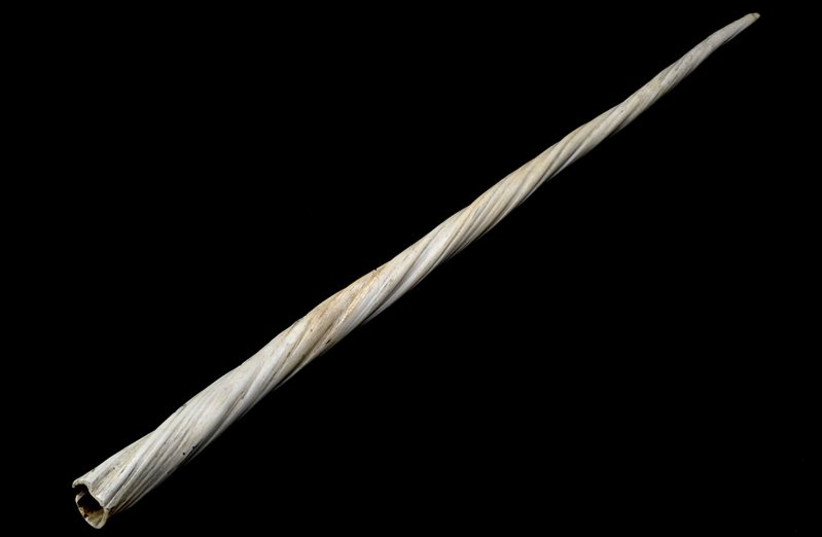Narwhals are one of the strangest-looking animals on the planet. With their distinctive long horn, these arctic sea mammals are often compared to the mythical unicorn.
But narwhals are far different from the fictional horned equines. These fascinating animals have had an interesting place in history, but the future of their species and their arctic home may be uncertain.
Here is everything you need to know about narwhals, the unicorns of the sea.
What are narwhals? Are narwhals real?
Yes, narwhals are real. The species known as a narwhal is, in fact, a type of whale, and is a close relative of the beluga.

What sets them apart from their cousins, however, are their tusks. Male narwhals have one long horn-like tusk protruding from the front, which is in fact an elongated canine tooth.
These tusks are straight and spiral-shaped, reaching around 1.5-3 meters in length and weighing around 10 kilograms. These are mainly in males, though some females have been seen with tusks, and some males have even been seen with two tusks. Only one instance has ever been recorded of a female narwhal with two tusks.
These tusks serve a variety of purposes, and while it is commonly thought that they are used as weapons or as means for males to fight one another, the tusks are actually used as a sensory organ, though they may also be used for communication. Tusks also has a noted role in helping hunt, though by stunning prey rather than impaling. However, as females typically lack tusks yet live longer than males, it is impossible that the tusks serve some essential, vital function that is necessary to survive.
Where do narwhals live? What do they eat?
Narwhals live in the Arctic Ocean, though they are often concentrated in specific inlets and fjords.
Their diet consists of sea life, but is very specific, mostly shrimp, cuttlefish, cod and halibut.
These animals tend to live for around 50 years on average, though some believe they could live to be over 100.
The main threats facing them are predators such as killer whales and Greenland sharks. However, they are also actively hunted by humans, who tend to sell the skin, teeth and tusk while eating the meat.

Are narwhals unicorns?
No, but many people throughout history have fallen for that con.
In the Middle Ages, many in Europe believed narwhal tusks to be the horns of the fabled unicorn. As such, mystical properties were often ascribed to them, like the ability to neutralize poisons. These tusks could be sold for high sums and were sought after by many wealthy Europeans. Among the most famous is a tusk gifted to Queen Elizabeth I, which was carved and covered in jewels and was said to be worth the price of a castle.
What is the relationship between narwhals and climate change?
Narwhals are animals that thrive in the cold. However, climate change has caused them to need to adapt, as the arctic ocean is warming faster than the rest of the planet.
But while they are undoubtedly adapting, it isn't going too well.
Already, scientists noticed that the mercury count in narwhals has increased over the years, as is the case with other arctic predators. Their diet is changing as well, with Arctic sea ice decline forcing them to search for prey in the open ocean.
The presence of mercury is especially concerning. The element is a neurotoxin and is known to work its way up the food chain when an animal eats another animal that has mercury, and then it gets eaten along with said mercury, and so on.
This happens with polar bears, but their mercury can be expelled into their fur. Narwhals lack fur, and their relatively long lives have made their levels of mercury especially dangerous.
“For an animal that lives a long time — these whales can live over 50 years — they’re accumulating mercury year after year,” noted McGill University wildlife toxicologist Jean-Pierre Desforges, author of a study on the subject published in March 2021 in the academic journal Current Biology. “That’s why they get to really high levels, and that’s of course why we’re concerned. If these levels get high enough, they could have a negative effect for the species.”
The change in diet is worrying too, as the open-ocean fish are less nutritious than narwhals' traditional Arctic prey.
Currently, narwhals are not considered endangered, and the International Union for Conservation of Nature has categorized them as "least concern" due to recent estimations of their global population being at around 170,000.
But as climate change continues to worsen, only time will tell what the future has in store for the unicorns of the sea.
